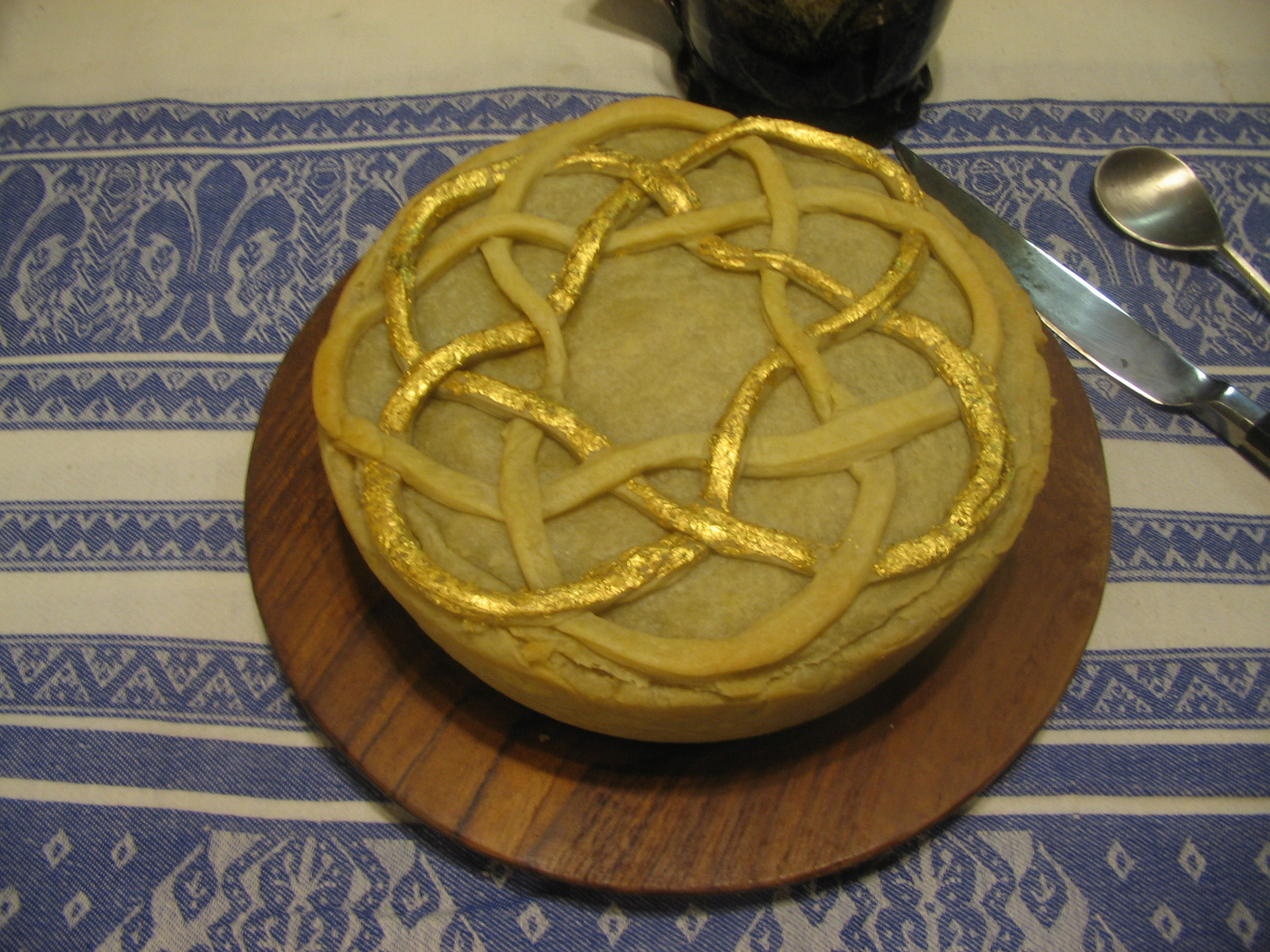What, Where, When
- This is a plausibly-medieval recipe for black bread made solely of rye flour with no additional wheat or other additives.
- It is based on modern techniques, while avoiding blatantly New World ingredients and approaches.
Discussion
Bread is the most commonly mentioned food in the Primary Chronicle.
Rye was the most commonly found grain in the 11th-12th century layers in digs in Novgorod, and references exist to its use in both porridges and breads. I wanted to serve it as a bread, but most modern recipes for “Russian Black Bread’ include a high proportion of wheat flour and / or a variety of modern and/or New World ingredients such as cocoa and molasses to give the bread the characteristic color, sweetness and tang. These clearly won’t do for a 100% rye, plausibly early Rus bread.
In further research, I found two methods for achieving this. One was slow baking to make a “Pumpernickel” style loaf, with up to a 14 hour baking time in a covered pan. While I think this was not an unreasonable idea, and initial experiments with this type of baking produced interesting results, it simply wasn’t practical for an SCA feast of this size.
The second involves “scalding” the rye flour before allowing an overnight fermentation – this produced a dark, dense bread with sweet notes (from the rye) and sour notes (from the sourdough). The technique was found in a modern British newspaper comparing several rye bread recipes .

One Comment